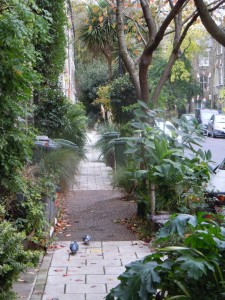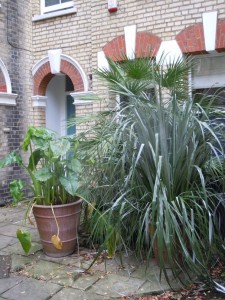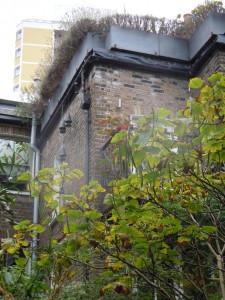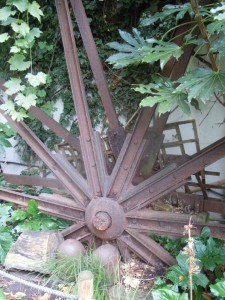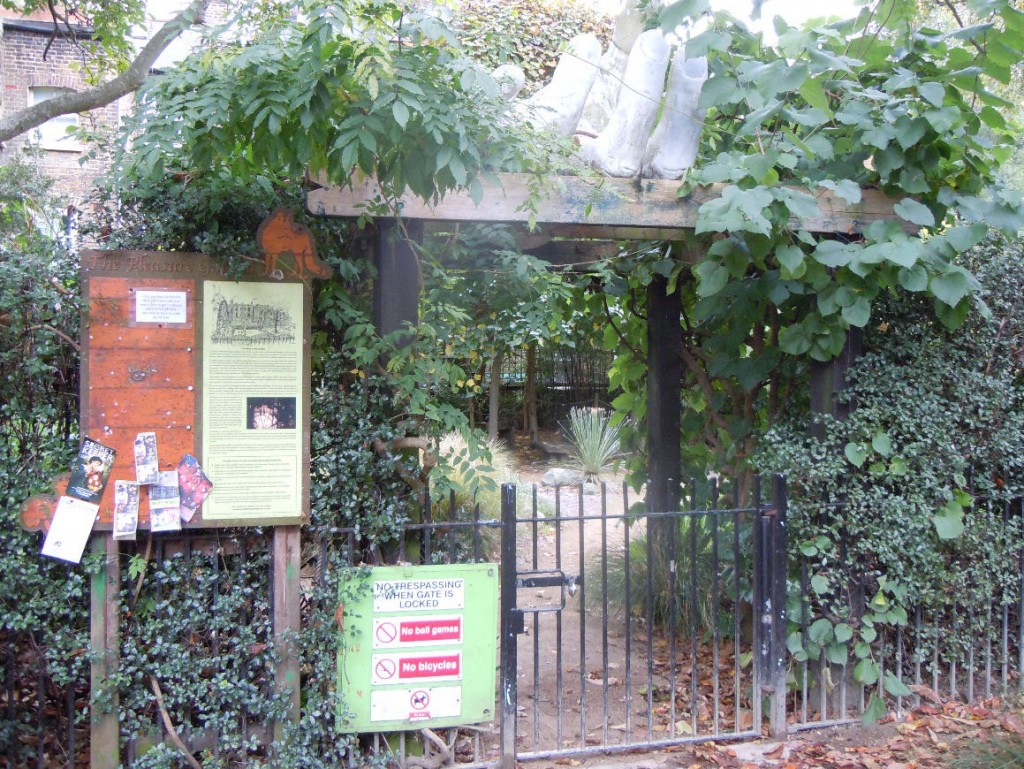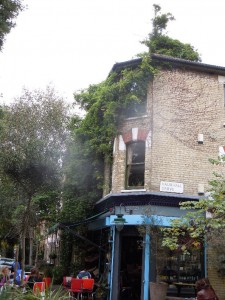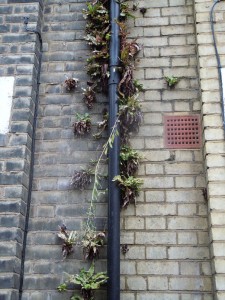It’s been a little while since I’ve put pen to paper (or fingers on keys) and written a piece on behalf of the MPGA. I’ve enjoyed a busy year, gardening, studying for my Masters in Garden History and visiting many gardens both home and abroad. Still, having now broken the back of my studies, I have some spare time to re-engage with the many gardens and public spaces with which the MPGA have been involved over the years.
I can’t quite believe I hadn’t previously visited, or even accidentally stumbled across, Bonnington Square before now, but having been nudged in that direction by MPGA’s Shirley Brihi, I’m sure glad I did make the effort to go there one cold October afternoon.
Having left the confusion of Vauxhall Station behind me, navigated myself across the busy South Lambeth Road, suddenly I found myself wandering curiously down Langley Lane. I say curiously, because as I did so, my horticultural senses were telling that I was entering a kind of magical oasis: it started to become a whole lot greener, with containers of every description (bins, troughs, oil cans) filled with plants, some rammed tightly, others spilling both flowers and foliage out over the sides.
The streets around Bonnington Square are a horticultural haven. Fences and houses are clothed in climbers; street trees are under-planted with leafy and lush architectural plants: Acanthus mollusc, Euphorbias and Phormiums, to name just a few! It would appear that every effort is made to ensure that the many aesthetic pleasures that come with plants – texture, colour, structure etc – are in evidence, tactile and shoe-horned into every vacant space. With planting so diverse and exciting as this, you can tell instantly that some very clever, plant-loving people, have had a hand in the design of the area and the garden which lies at the heart of the square.
Of course, many gifted gardeners have, over the years, helped to shape and influence the plantings at Bonnington, with one notable past resident being Dan Pearson (garden designer and writer) who lived on the square for six years and who, as part of the design committee, helped shape the garden. Writing in his book Home Ground (2011) Pearson writes of Bonnington Square as a place where ‘everyone pulled together to live in the city in a different way… we put our heart and soul into it.’
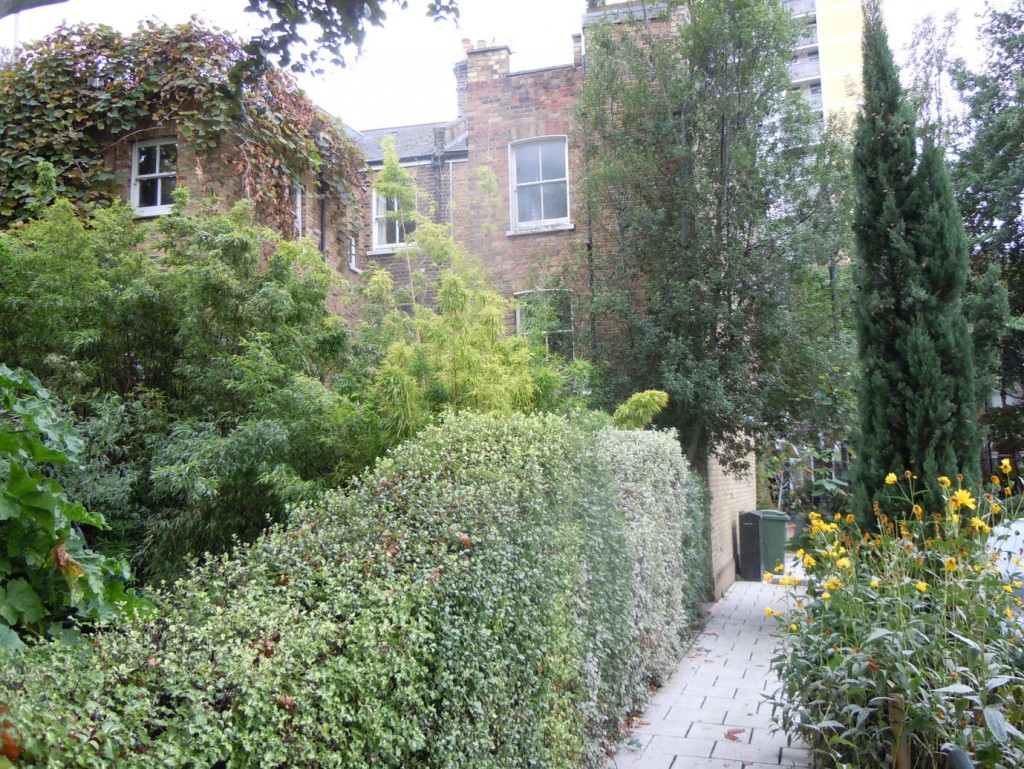
A wavy Pittosporum hedge forms an unusual boundary to the garden, with the tall bamboos in the garden itself, and the yellow perennial Coreopsis surrounding a columnar Juniper.
Another driving force behind the garden was the Australian film-maker, Evan English, who according to James Booth (current chairman of Bonnington’s garden association) provided the ‘main impetus to build the garden’ in the first place and who also ‘organised the long lease from Lambeth council.’
As a result of WW2 bomb damage, the garden was created in an area just 100 metres from Vauxhall’s famous pleasure gardens of the 1800’s, a leading venue for public gatherings, attracting and entertaining enormous crowds of eclectic Londoners for over 200 years. A handy synopsis of Bonnington is posted at the garden’s entrance, informing the visitor that the garden was created partly in homage to those original pleasure gardens. However, I imagine the gardens at Bonnington offer today’s visitor more serenity and relaxation than the excesses and entertainment presented back in the days when tightrope walkers, hot air balloons, military parades and fireworks thrilled the crowds.
To guestimate the size of the garden I would say it is roughly the same size as a tennis court: maybe slightly larger. You enter the garden through a small iron gate, welcomed in by a giant hand above you and a curiously winding crushed lime path. Once inside, it’s the plantings that have you enthralled and intrigued. The boldness and bravery of the borders’ eclecticism reveals plants so diverse you really do feel like you’ve entered into a little oasis of horticulture. Mass plantings of spikey-leaved Melianthus, sit alongside such foliage plants as the Smoke Bush (Cotinus coggygria), exotic-looking Fatsia shrubs and tall Trachycarpus.
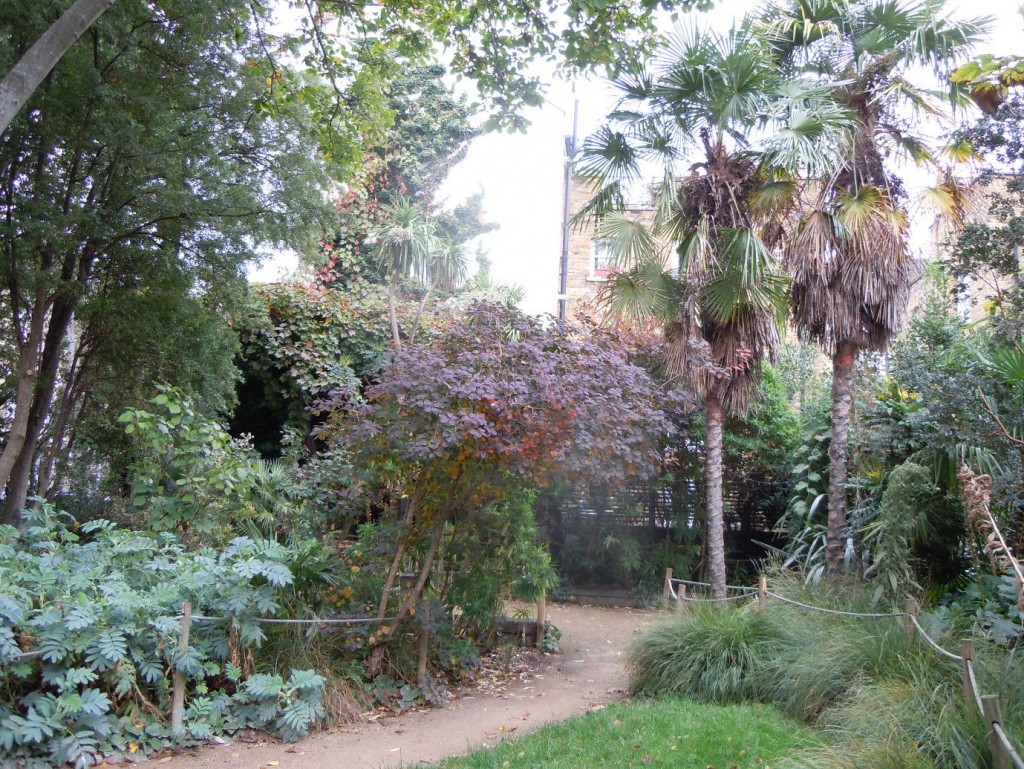
Swaying hummocks of ornamental grasses underplant many tall yellow-flowering Mahonias and large-leaved bananas, with the equally striking foliage of Euphorbia mellifera (Honey Spurge) adding to the feeling other-worldliness: colourful Tibetan prayer flags hang on Himalayan birches.
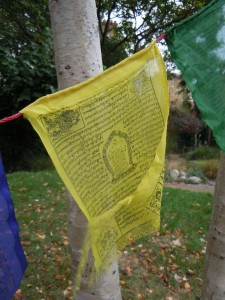 |
Keen to find out how the square maintains its high horticultural status, and how the local inhabitants remain inspired to fill every conceivable gap with plants, I asked James whether there was a kind of mutually-beneficial symbiosis between garden and resident. He spoke of the inspiration some residents shared with the garden, and how the garden is much appreciated by its many visitors. He also mentioned Charlie Boxer’s Italo Deli which sits opposite the garden’s entrance and how the garden provides a lovely backdrop for its patrons. With no full-time gardener and no on-going funding Charlie also helps raise funds for the garden. Regular quarterly workdays attract local volunteers; James regularly helps clear paths and mow the lawn and, despite exuberant plantings, the garden remains relatively low-maintenance. Another very welcome contribution came from the MPGA who, as I mentioned, alerted me to this outstanding and unique garden square. In 2016, they donated almost a thousand bulbs, provided by Taylors Bulbs under their Bulbs for London joint initiative.
If you haven’t already seen the garden, and the surrounding streets, of Bonnington Square, I thoroughly recommend you make a slight detour next time you’re in the vicinity of Vauxhall Station. It really is quite amazing. As I say, I saw it in October, but with such a high percentage of opulent evergreen material, I think even a visit in the depths of winter would reveal a similar picture. I have put it in my diary for a high summer visit next year. I simply want to go and feel what it’s like in hot weather: the heat combined with such leafy luxuriance will no doubt transport me to another world far from the hustle and bustle of central London.
Marc Owen

